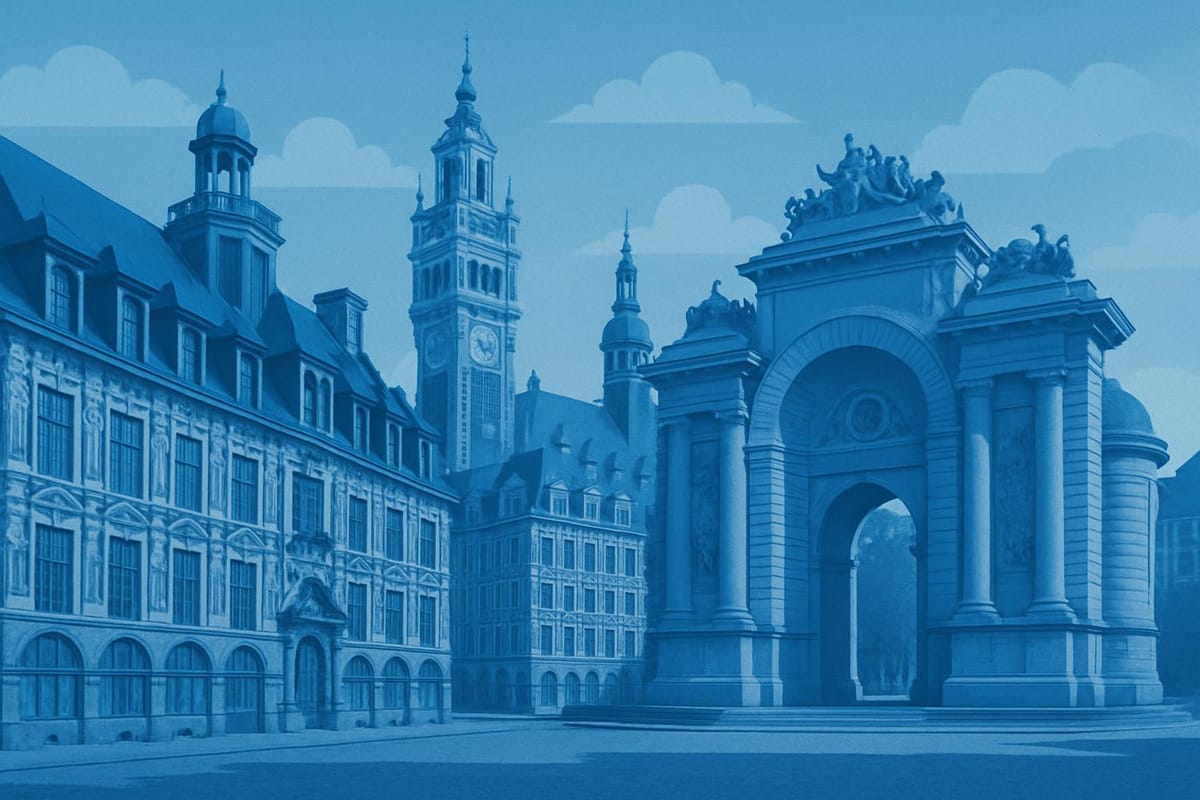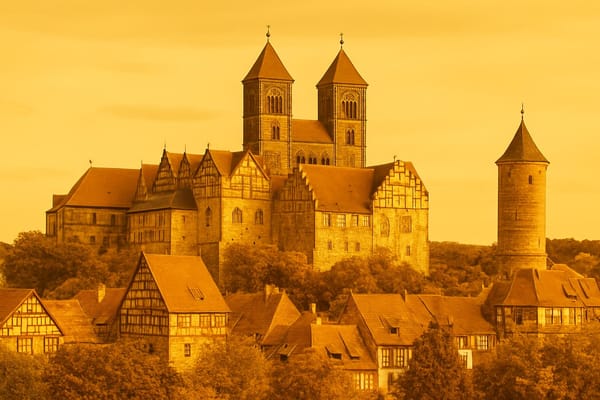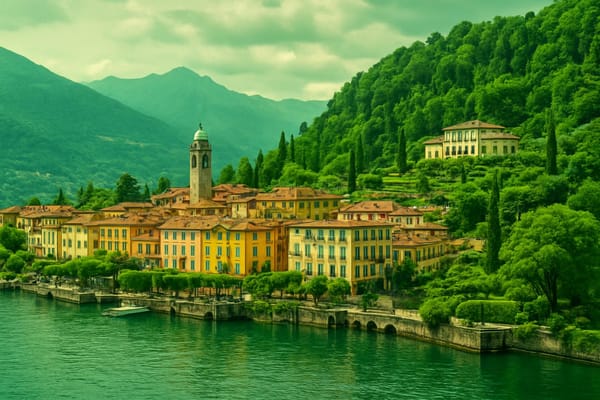Lille
Historic cobblestone streets, vibrant markets, top museums & gourmet eats - ideal weekend getaway.

Important things to know about Lille
Lille is a dynamic city in northern France where historic roots meet modern life, creating a distinctive urban identity that appeals to residents, students and professionals alike; its compact streets and mixed architecture reflect centuries of industrial growth and cultural exchange, while contemporary neighborhoods showcase a thriving creative economy, technology startups and a strong service sector that make Lille an important regional hub in France. The local population contributes to a lively social fabric: a large student community brings youthful energy and innovation, international residents add multicultural flavor, and long-established families maintain traditions that influence daily rhythms, culinary habits and community events. Transportation infrastructure is efficient and well-integrated, facilitating commuting, regional trade and cross-border links that strengthen Lille’s role as a commercial crossroads; public transit, cycling paths and regional rail connections support sustainable mobility and urban accessibility. The city’s economy balances manufacturing legacy with modern sectors such as digital services, education and research, contributing to resilient employment and entrepreneurial opportunities. Urban planning emphasizes mixed-use development, green spaces and adaptive reuse of older buildings, encouraging a balanced quality of life where work, study and leisure coexist. Seasonal weather shapes outdoor life and markets for local products, while gastronomy and neighborhood cafés foster convivial neighborhoods. Overall, Lille presents a compelling blend of history, innovation, culture and connectivity that defines its character within France and makes it a notable example of a mid-sized European metropolis evolving for the 21st century.
Sightseeing hot-spots in Lille
Lille is a vibrant northern French city where sightseeing mixes Flemish charm and modern culture. Start your exploration in the heart of the city at the Grand Place (Place du Général de Gaulle), surrounded by ornate townhouses and the famous Vieille Bourse, a 17th-century stock exchange known for its carved facades and second-hand book stalls. Wandering through Vieux-Lille, the Old Town, reveals narrow cobbled streets, designer boutiques and patisseries that showcase the region’s culinary heritage. The combination of historic architecture and lively street life makes Lille one of the most attractive destinations for things to do in Lille and a must-visit on any northern France itinerary.
Art and culture are central to Lille’s appeal, anchored by the impressive Palais des Beaux-Arts, one of France’s largest fine arts museums outside Paris, with European masterpieces and rotating exhibitions that draw art lovers from across the world. Contemporary galleries, street art, and smaller specialty museums complement the grand collections, while cozy cafés and brasseries provide the perfect break between museums and shopping. Food markets and local specialties-think waffles, moules-frites and regional cheeses-add flavor to your sightseeing and offer authentic ways to experience Lille’s gastronomic scene.
Beyond the center, green spaces and military history invite further discovery: the Citadel, designed by Vauban, sits beside pleasant parkland ideal for walking and cycling, while the bustling Wazemmes market and seasonal events like the Christmas market keep the city lively year-round. Efficient public transport and compact neighborhoods make it easy to plan a walking tour that covers top Lille attractions in a weekend, ensuring every visitor leaves with a sense of the city’s rich history, dynamic culture, and warm hospitality.
Hotels to enjoy in Lille
Lille, France is a charming destination where hotels in Lille range from elegant boutique stays to practical budget hotels, catering to every traveler’s need. Located at the crossroads of Europe, Lille offers a variety of Lille hotels close to major transport hubs like Gare Lille Flandres and Lille Europe, making it easy to explore the city or take a day trip to Paris, Brussels, or London. Visitors searching for the best hotels in Lille will find properties within walking distance of the Grand Place, the vibrant markets, and the renowned Palais des Beaux-Arts, ensuring culture and convenience are always nearby. Whether you prefer a historic building in Old Lille with Flemish architecture and cobbled streets or a sleek modern hotel in the Euralille district, accommodations emphasize comfort, style, and local hospitality.
Choosing the right hotel can enhance your stay, and many Lille hotels offer amenities such as free Wi‑Fi, cozy breakfast rooms, and 24‑hour reception to suit business travelers and tourists alike. For those prioritizing luxury, there are high-end options with spa services and fine dining, while travelers on a tighter budget can still find clean, well-located rooms for exploring Lille’s cafés, museums, and nightlife. Consider proximity to attractions and transport when booking-hotels near Grand Place and Gare Lille Flandres are especially popular for first-time visitors-so you can maximize your time enjoying the city’s gastronomic scene, historic sites, and seasonal festivals.
Restaurants to try in Lille
Lille’s dining scene blends Flemish soul and French finesse, and the restaurants of Lille reflect that delightful crossover. Strolling through Vieux-Lille you’ll find cozy bistrots, bustling brasseries, and contemporary kitchens where chefs reimagine regional staples with seasonal produce. From sunlit terraces to intimate candlelit rooms, Lille restaurants serve everything from affordable everyday plates to refined tasting menus that rival larger French culinary centers. Food lovers searching for gastronomy in Lille appreciate the emphasis on local ingredients, craft beers, and welcoming service that makes every meal feel authentic and memorable.
Whether you crave hearty comfort food or avant-garde tasting experiences, Lille has options that appeal to every palate. Classic northern dishes such as moules-frites, carbonade flamande, and the beloved welsh sit alongside inventive small plates and Michelin-starred creations, letting visitors savor both tradition and innovation. Neighborhood markets and the city’s strong beer culture mean pairing a dish with the right brew is part of the ritual, while seasonal menus highlight the region’s terroir. For travelers and locals alike, choosing among Lille restaurants becomes a journey through flavors, atmosphere, and history-each meal an invitation to explore the north of France through its vibrant culinary scene.
Best shopping stops in Lille
Lille is a vibrant destination for shopping in France, where historic charm meets contemporary retail. Wander through Vieux-Lille and you’ll discover narrow streets lined with stylish boutiques, designer showrooms and artisan ateliers offering everything from haute couture to unique homeware. The bustling Rue de Béthune and the elegant Grand Place area are magnets for fashion lovers, while the modern Euralille shopping centre and flagship stores like Galeries Lafayette provide a one-stop experience for high-street and luxury brands. Food lovers will be drawn to specialty shops selling local delicacies-chocolatiers, patisseries and cheese mongers stock Northern French treats that make excellent souvenirs. Combining architectural beauty with retail variety, Lille’s shopping scene balances international names and independent talents, making it a compelling stop for savvy shoppers.
Beyond permanent shops, Lille’s retail calendar offers standout events and markets that elevate the city’s appeal. The legendary Braderie de Lille, Europe’s biggest flea market, transforms streets into a vast treasure hunt of antiques, vintage clothes and quirky finds, while the colorful Marché de Wazemmes delivers fresh produce, spices and multicultural flair several days a week. For those hunting contemporary design, concept stores and young French labels showcase cutting-edge trends and sustainable fashion. Whether seeking bargains, curated pieces or gourmet souvenirs, shopping in Lille merges authentic Northern French culture with modern retail amenities, ensuring an engaging experience for every visitor and boosting the city’s profile as a premier shopping destination in France.
Nightlife highlights in Lille
Lille nightlife comes alive after dusk with a vibrant mix of historic charm and contemporary energy that appeals to locals and visitors alike. In Vieux-Lille, cobbled streets host elegant cocktail bars and intimate wine cellars where the atmosphere is as important as the drink, while the student scene around universities keeps energy high with affordable late-night eateries and bustling pubs. For those who love live music, small venues and concert halls regularly feature jazz, indie and electronic acts, and craft beer bars scattered across the city showcase the best of regional brewers alongside innovative mixology. Whether you’re seeking a relaxed evening or a lively night out, the diversity of venues ensures Lille nightlife satisfies varied tastes, from romantic evenings to high-energy club nights.
The city's compact layout makes bar-hopping effortless: start with aperitifs in a cozy courtyard, follow up with tapas and signature cocktails, and end at a dance floor where DJs spin until the early hours. Neighborhoods like Rue Masséna and Wazemmes are known for their convivial vibe and late-night options, while pop-up events and themed parties add freshness to the calendar. Night markets and nocturnal cultural events also contribute to Lille’s after-dark appeal, combining gastronomy, music and street life into an unforgettable experience that reinforces Lille as a top destination for dynamic nightlife in northern France.
Getting around in Lille
Lille, France, offers a well-connected and convenient transport hub where the Lille Airport (Lille-Lesquin) lies just a short drive from the city center and is served by regular shuttle buses, car rental services and parking options that make arrivals and departures smooth for both business and leisure travelers; complementary to air access, the city boasts two principal train stations-Lille Europe for high-speed international services like Eurostar and many TGV connections, and Lille Flandres for regional and national services-these stations are within easy walking distance of each other and link Lille directly to Paris (about an hour by TGV), Brussels, London, and other major Belgian and French cities, while a comprehensive regional rail network (TER) and frequent commuter trains ensure strong rail connections across Hauts-de-France. Inside the city, the seamless interchange between long-distance trains and local metro, tram and bus services enhances accessibility to hotels, business districts and attractions, making Lille an efficient base for exploring Northern Europe and an attractive node for travelers seeking fast international and regional transport options.
Culture must-see's in Lille
Lille is a vibrant city where culture and history mingle in every cobbled street and modern square. Strolling through Vieux-Lille reveals elegant Flemish brick facades, boutique shops, and bistros that reflect the region’s gastronomy and convivial spirit. The city’s museum scene is anchored by the impressive Palais des Beaux-Arts, one of France’s largest museums outside Paris, offering masterpieces that draw art lovers and scholars alike. Contemporary creativity thrives in local museums and galleries, while street art and design spaces showcase a younger, experimental side of Lille. Events and festivals punctuate the cultural calendar, making the city an attractive destination for cultural tourism and long weekends focused on art, music, and local traditions.
Beyond monuments and exhibitions, Lille’s cultural highlights include lively markets, theatrical productions, and the world-famous Braderie de Lille, a sprawling flea market that turns the city into a bustling, communal celebration of antiques and local life. The Grand Place and surrounding quarters host open-air concerts and seasonal gatherings that reveal Lille’s warm civic character and its rich Flemish heritage. Architecture enthusiasts will appreciate the contrast between historic townhouses and cutting-edge urban projects, while food lovers can explore local specialties like carbonnade and artisanal cheeses. Overall, culture in Lille blends tradition and innovation, offering visitors diverse things to do in Lille that satisfy art lovers, foodies, and festival-goers alike.
History of Lille
Lille’s long and layered past unfolds from a medieval market town on an island in the Deûle to a major hub in Northern France and the historic region of Flanders. The recorded history of Lille shows growth around a fortified core in the Middle Ages, when merchants and craftsmen established the durable fabric of an urban community that would become known as Vieux-Lille. Through the late medieval and early modern periods Lille passed between duchies and crowns-linked to Burgundian and Spanish Netherlands rule-until the city was besieged during the reign of Louis XIV and finally incorporated into France in the 17th century, prompting the construction of the Citadel designed by Vauban. The classical façades of the Vieille Bourse, the bustling Grand Place, and the narrow cobbled streets still evoke that era even as they stand alongside later architectural layers. As the centuries advanced, Lille’s strategic location near Belgium shaped its cultural and economic exchanges, giving the city a cross-border identity that remains a defining trait in the history of Lille.
The 19th and 20th centuries redefined Lille as an industrial powerhouse: the textile industry, coal and manufacturing accelerated urban growth during the industrial revolution, and the arrival of railways knitted the city into European trade networks, later amplified by the opening of high-speed lines and the Euralille district. The city endured occupation in both World Wars, with significant hardship and eventual reconstruction that shifted the economy toward services, education and culture. Investments in museums such as the Palais des Beaux-Arts, higher education through the University of Lille, and the designation as European Capital of Culture 2004 stimulated a modern renaissance, blending heritage preservation with contemporary urban planning. Today’s Lille markets its rich past and dynamic present to tourists and businesses alike, and the ongoing narrative in the history of Lille highlights resilience, architectural diversity, and a continuous reinvention that keeps the city central to the story of northern France.



